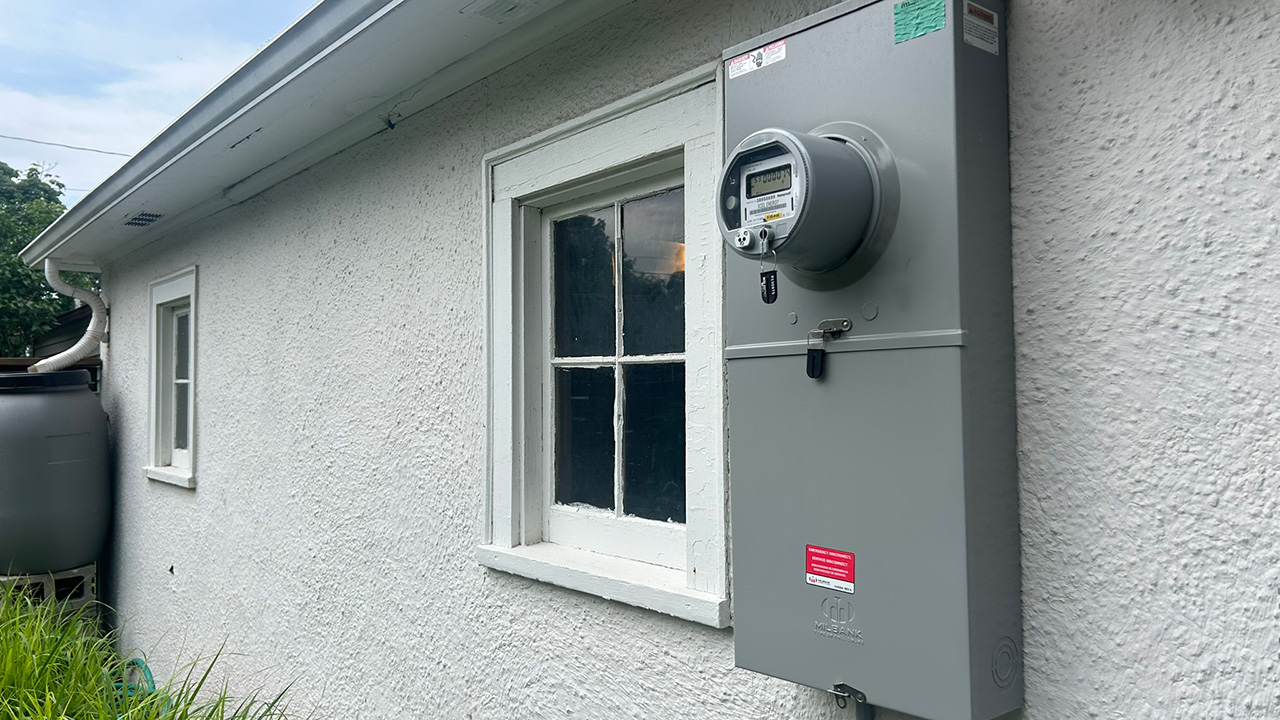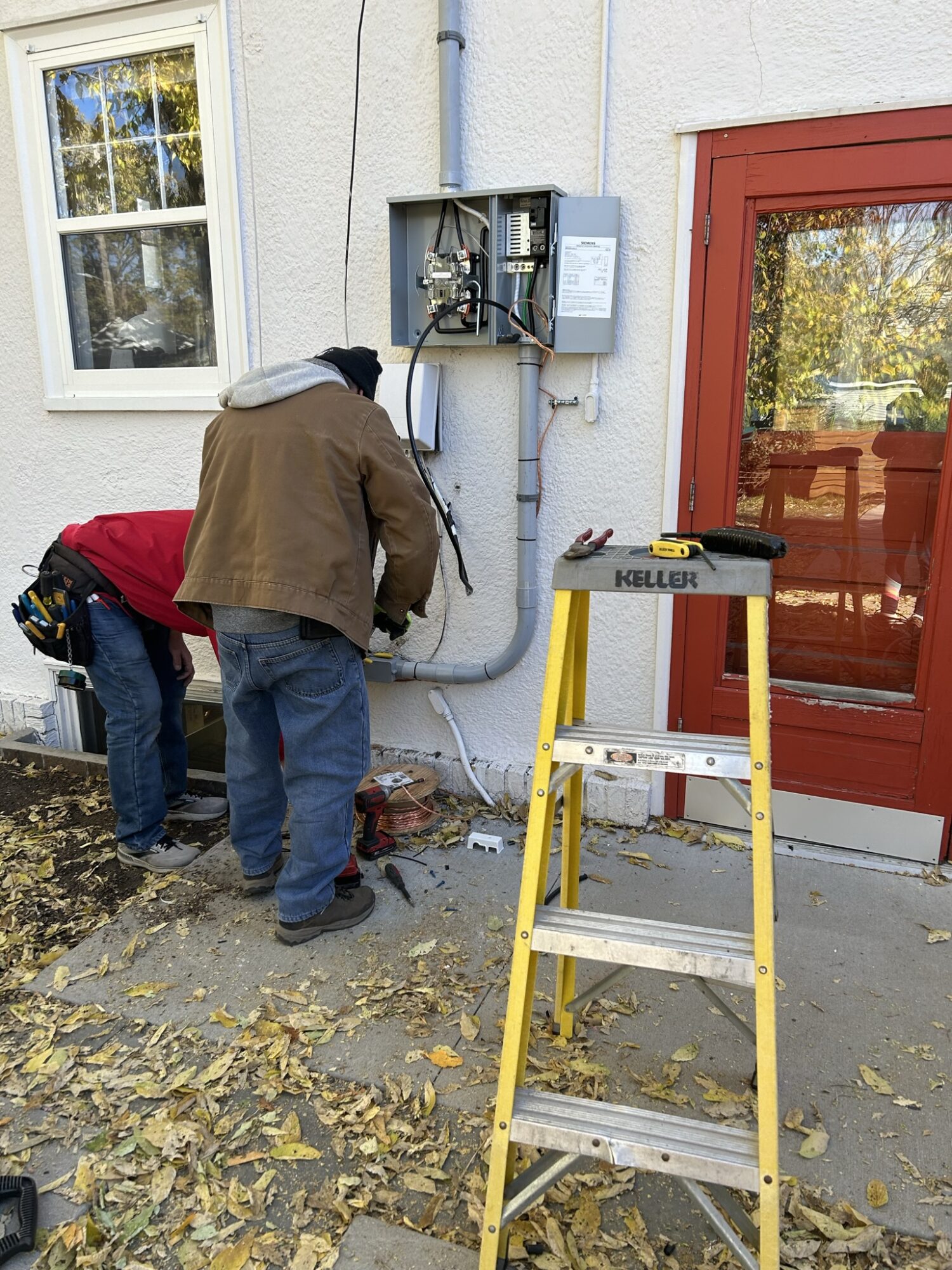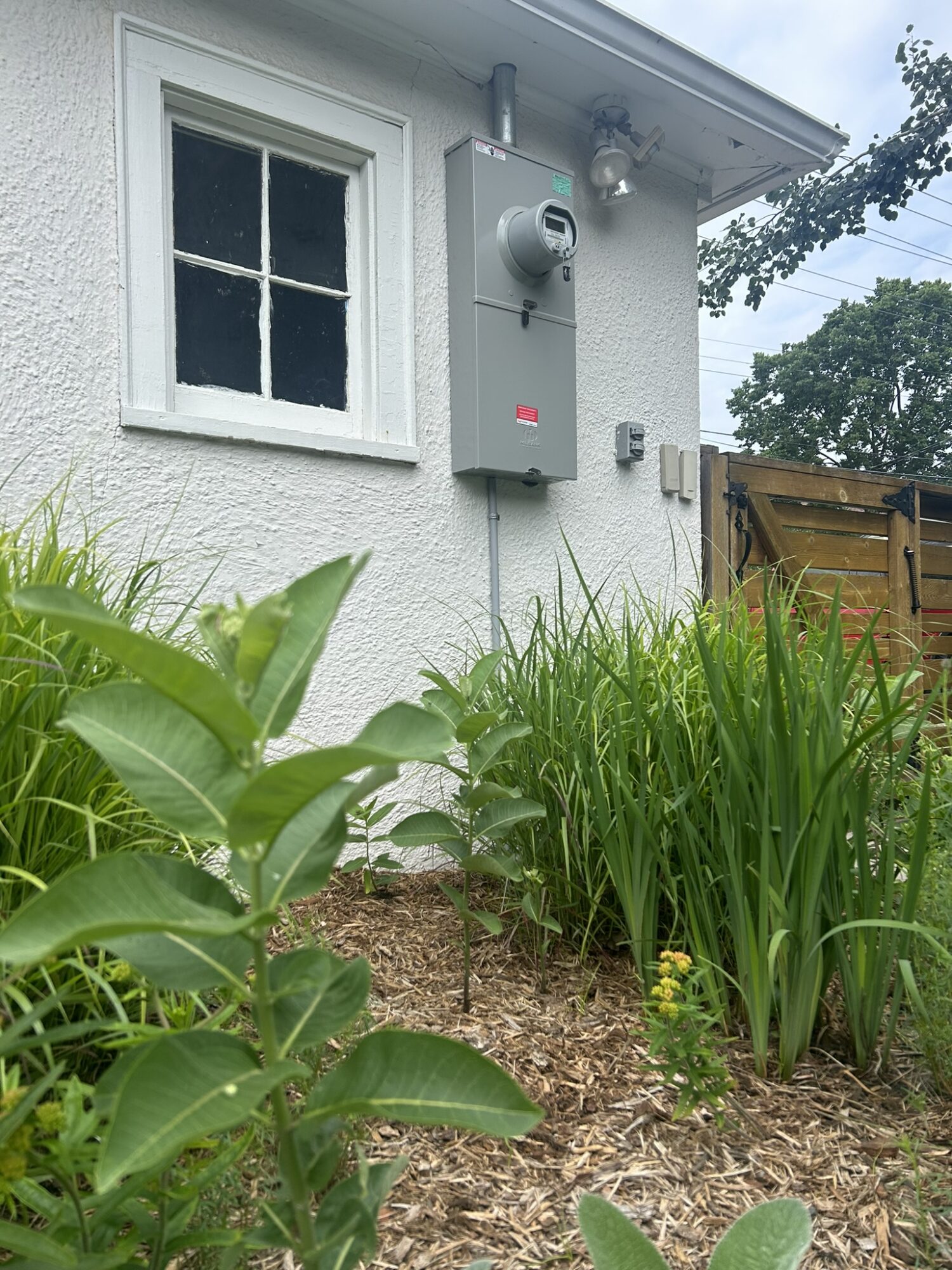How time-of-use rates save customers money and reduce emissions

As we transition toward a low-cost, clean electric grid, time-of-use (TOU) rates are becoming an essential tool for managing electricity consumption, reducing the use of fossil fuel generation, and optimizing grid efficiency.
But what exactly are TOU rates, and why are they so important?
In this post, we’ll lay out how TOU rates can be an effective tool in our toolkit for creating a low-cost, clean electricity future here in Minnesota. We’ll explain why TOU rates are helpful and needed, the TOU rate principles Fresh Energy advocates for to ensure they’re equitable and effective, as well as several examples of successful TOU programs that have already been implemented across the country. By the end, you’ll be well-versed in how time-of-use rates can help build a cleaner, more efficient electricity system!
What are time-of-use rates, and why are they important?
Time-of-use rates are a pricing structure where the cost of electricity varies depending on the time of day, day of the week, and/or season. Unlike traditional flat rates where electricity costs the same no matter when you use it, TOU rates more accurately reflect the actual cost of generating and delivering electricity at different times. During peak hours, when electricity demand is high and electricity is more expensive to produce, rates are higher. Conversely, during off-peak times when demand is low and low-cost, clean energy sources like wind and solar are more plentiful, rates are lower.
TOU rates are designed to incentivize customers to shift their electricity usage to off-peak periods, thereby reducing the overall demand during peak times. This shift has several benefits:
- Efficiency and cost savings: By spreading out electricity use more evenly throughout the day, electric utilities can operate more efficiently, reducing the need for expensive and polluting peaker plants (like natural gas peaker plants) that are only used during high-demand periods and sit idle during off-peak times.
- Environmental benefits: Encouraging the use of electricity to better match with when renewable resources are abundant reduces our reliance on polluting fossil fuels like natural gas and coal, which helps Minnesota reach its greenhouse gas emission reduction targets to be carbon-free by 2040.
- Consumer control: TOU rates offer consumers more control over their electricity bills by allowing them to take advantage of lower rates during off-peak times and rewarding them for helping our electric system shift to low-cost, clean electricity.
Here in Minnesota, where wind and solar power are increasingly providing renewable energy, TOU rates help to align electricity consumption with periods when wind and solar are most available, further supporting the transition to a clean energy grid.
How do time-of-use rates work for customers?

Customers can join a TOU program and shift their electricity use from peak times to off-peak times, staggering their energy usage to different times of day in exchange for lower electricity rates from their utility. When done well, TOU programs are a win-win-win: customers can save money on their electric bills, utilities can smooth out the use of electricity throughout the day, and society as a whole will use more low-cost, clean power more often, helping to reduce our reliance on fossil fuel peaker plants that emit greenhouse gases that exacerbate climate change and cause local air pollution that can have negative health consequences for the surrounding community.
Technology plays a key role in making TOU rates user-friendly and convenient for customers. Smart devices like thermostats, water heater timers, and electric vehicle (EV) chargers can adjust their operation to maximize usage of off-peak times, ensuring that consumption patterns better match grid needs. This means your EV might start charging at different times each night, say 1 a.m. one night and 3 a.m. the next, but will always be ready by morning. This automatic adjustment supports a more efficient and cleaner power grid without requiring constant attention from the customer.
Time-of-use rate principles Fresh Energy advocates for
Fresh Energy has been actively involved in advocating for effective TOU rate structures over the last decade with utility plans at the Minnesota Public Utilities Commission.
While time-of-use rates are an important tool for creating an efficient, clean electricity system, there are several key principles and best practices we support to ensure they are most effective and equitable:
1. Design based on net load shape: TOU rates shouldn’t be designed based around the absolute highest electricity demand of the day (i.e., the gross load shape). Instead, they should be designed around “net load”—gross load minus the wind and solar providing cheap, clean electricity. By basing TOU rates on net load, we can encourage customers to shift usage to the times of day when electricity demand is hardest to meet with renewables. Doing this both increases demand for wind and solar generation (which can help us add more of it) and eases strain on the grid when wind and solar generation drops. Increasingly, the periods with less wind and solar generation are the most challenging periods for grid planners and operators. In this way, TOU rates help to shift electricity use from more costly, polluting sources and help to better use lower-cost renewable sources like wind, solar, and clean-powered battery storage.
2. A 4:1 price differential between peak and off-peak prices: One of the most important factors in a successful TOU rate design is setting a proper price differential between peak and off-peak times.
Here’s the idea: if the price for electricity during peak demand (when everybody wants to use it) and off-peak demand (when fewer people are using electricity) are too close to each other, consumers aren’t likely to shift when they use electricity. After all, if you’re only saving a few pennies, what’s the point? Conversely, if the price differential between peak and off-peak times is too high, i.e., costly during peak demand and very cheap during off-peak periods, that can feel punitive and inflexible to customers.
Fresh Energy advocates for price ratios that sufficiently incentivize and reward flexibility, while balancing ease, practicality, and customers’ ability to change their usage patterns. Research on the effectiveness of different price signals, including metastudies based on TOU rate pilots and programs from around the world, have found that a 4:1 price differential provides on average a 10% reduction in electricity use during the peak period, and a 2:1 price differential reduces peak usage by around 5%. (A 4:1 price ratio could mean, for example, 8 cents/kilowatt hour (kWh) during peak periods and 2 cents/kWh during off-peak periods.) This research also indicates that TOU programs paired with “enabling technology” such as smart thermostats have approximately double the peak reduction for the same price ratio. Therefore, Fresh Energy typically advocates for rates that have at least a 4:1 ratio between peak and off-peak times and emphasizes the importance of pairing rates with deployment of enabling technology. This approach tends to balance the incentive for changing usage patterns, the opportunity to save on bills, and ease of use for customers.
It’s worth noting that for more sophisticated and more flexible customer groups, like large commercial and industrial customers or EV charging customers, ratios can be higher to better incentivize a long-term change in usage patterns—and more fairly charge customers for the true cost of serving their needs. Commercial customers that can flex their load, such as by using pre-cooling, energy or thermal storage, or energy management tools, can use a stronger, higher price signal to maximize savings and maximize grid benefits.
3. Customer education and communication: Successful implementation of TOU rates also depends heavily on electric utilities properly educating and communicating with their customers. Utilities should provide educational tools like bill comparison features to help customers understand how their bill may change on a TOU versus flat rate, and how much money they could save by changing behaviors to use electricity off peak.
Additionally, utilities can educate customers about other tools (and incentives) that are available to help them shift their electricity use more easily, such as smart thermostats, programmable timers, and weatherization and energy efficiency measures. For opt-in TOU programs, utilities should especially target customers with flexible loads like EVs and programmable thermostats which enable customers to benefit from the rate with minimal effort or inconvenience. Effective communication strategies are essential to ensure customers are empowered to benefit from these rate structures.
4. Critical peak pricing components: In addition to typical TOU rates, adding a critical peak pricing component can also be beneficial. This is how it works: for a small number of hours, often corresponding with unusual weather or other high-demand periods, customers will see an electricity rate that is significantly higher than normal—such as 45 cents/kWh compared to 15 cents/kWh normally. Utilities notify participating customers in advance of a “critical peak” event, asking them to reduce their electricity use during a specific period of time, and reminding them of the price difference.
In return, customers receive lower electricity rates throughout the rest of the year. This approach helps alleviate stress on the grid during peak events and rewards customers with lower annual costs. Critical peak pricing is similar to other programs called “demand response,” which are more common among commercial customers that use a lot of electricity and can more easily turn their operations down or off for a certain price.

5. Opt-out flexibility: When TOU rates are first being introduced, and until there is track-record of success for customers, it is crucial that TOU rate programs allow consumers the flexibility to opt out if they wish. This ensures that those who may have specific constraints or challenges responding to the price signal are not unfairly penalized. Over time, customers will become more familiar with TOU rates and flexible technologies will become more widespread, making participation in TOU rates easier and providing benefits across the board.
Time-of-use rate programs have succeeded across the U.S.
Time-of-use rates aren’t a new idea, and they’ve already helped shift electricity use and save customers money for decades.
Arizona Public Service, the largest electric utility in the state, has offered a voluntary TOU program since the early-1980s and has 56% of its 1.1 million residential customers enrolled. Their success is partly due to robust education from the utility, notably an electric bill comparison tool that is provided so customers can see how much money they can save by opting into either of their two TOU rate programs. This highlights how important customer education can be when implementing a successful TOU rate program!
Three electric utilities in Maryland recently showcased how TOU rates can reduce net peak demand. Two-year pilot programs were conducted from 2019 to 2021 for customers to opt-in to, with pricing differences of 4.2:1 to 5.8:1 of on-peak and off-peak rates. The result: reductions in peak demand from 9.3-13.7 percent in the summer and 4.9-5.4 percent in the winter. On average, customers saved between 2.3 percent to 9.7 percent on their bill.
TOU rate programs like those in Arizona and Maryland help customers save money, utilities shift demand, and avoid the use of costly fossil fuel generation to instead power our lives with low-cost, clean electricity.
How Fresh Energy is advancing time-of-use rates in Minnesota
At Fresh Energy, we engage with the Minnesota Public Utilities Commission to advocate for TOU rates that reflect best practices and benefit both consumers, utilities, and the environment.
We provide written comments during PUC proceedings and expert testimony during PUC hearings to support the adoption of well-designed TOU rates; collaborate with stakeholders, like utilities and consumer advocacy groups, to ensure that TOU rate proposals are fair and effective; and track the performance of implemented TOU programs across the U.S. to analyze data and feedback to ensure we are building the best programs we possibly can here in Minnesota.
By actively participating in the regulatory process, Fresh Energy helps to shape TOU rate policies that support a clean, efficient, and equitable future for all Minnesotans. Stay tuned for future regulatory updates to learn more about TOU programs!

